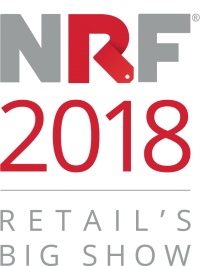
For more from NRF 2018: Retail’s Big Show on January 14 – 16 in New York City, visit the official recap.
Retailers have spent billions digitizing consumer channels — but what about the supply chain? At NRF 2018: Retail’s Big Show, Li & Fung CEO Spencer Fung issued a wake-up call to retail: The supply chain will become faster, digital and more innovative. Move now, or get left behind.
The retail supply chain “has not caught up with the speed that the world is moving at,” Fung said. He pointed out a glaring gap: Consumers are fully digital, while the supply chain is mostly analog. That means consumer preferences change every hour, yet retailers make purchasing decisions almost a year in advance.
But there are signs of progress. More and more C-suite leaders are talking about the speed of the retail supply chain as a key imperative and opportunity. For example, experts and retailers list a faster supply chain as a key factor in 2017’s projection-shattering holiday season.
So where is the supply chain headed? Fung outlined three things retailers will invest in.
Speed is #1
In just the last 18 months, there’s been a huge shift in retailers’ supply chain focus, from cost to speed. For 40 years, the supply chain has been optimized for cost, becoming longer and longer as production moves to far-flung countries. Now retailers are shifting to prioritize a faster supply chain so they can make decisions that closely reflect consumer demand. According to Fung, companies that reduce the supply chain cycle from 50 weeks to 20 weeks can see a double-digit increase in turnover and a double-digit decrease in both inventory and markdown.
Digital investments
Fung predicted that the retail supply chain will become fully digitized … eventually. As he noted, retailers have focused their digitization dollars on the front end, leaving most of the supply chain as an analog operation. However, this also means there’s tremendous opportunity and “low-hanging fruit” upstream. The result could be a “digital ecosystem where everybody benefits,” with end-to-end data that increases efficiency, decreases working capital and ensures full traceability.
New approach to design and product development
Fung provided a glimpse of a revamped product development and design stage. Using 3D design tools, designers can now “see what works and doesn’t work without having the physical sample.” This slashes the time required for design, and enables designers to see how an item will look in-store or on the catwalk. And as digital capabilities evolve, design will also shift to incorporate consumer feedback and be more responsive to the latest trends and social media phenomena.
Creating the supply chain of the future
For more stories from NRF 2018: Retail’s Big Show, visit the official recap page.